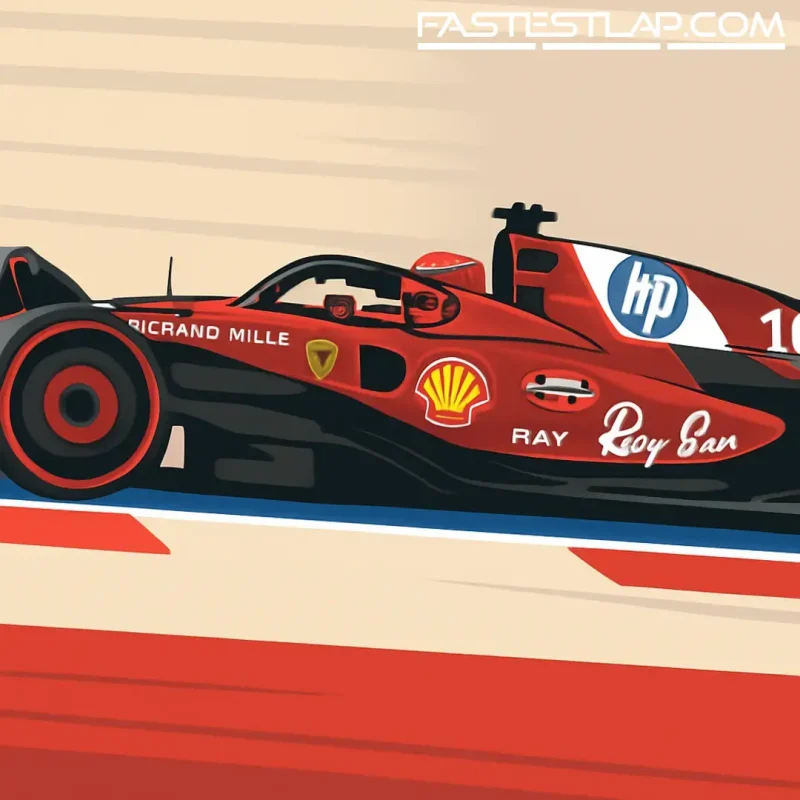Ferrari’s hush-hush 2026 intake hints at bold reset amid Mercedes momentum
Ferrari’s engine department is quietly ripping up its 2026 playbook. According to reports in Italy, Maranello has switched course to an aluminum-alloy cylinder head for its next power unit — and buried within it is a “top-secret” intake concept the team believes could be a genuine step. The catch? It comes after an earlier, radical steel head proposal was shelved over reliability concerns, costing time in a development race that nobody wants to lose.
The stakes are obvious. In 2026, Formula 1’s rules flip the table: 50% electrical power, fully sustainable fuels, active aero, and a drastically different energy split. Five manufacturers will make the grid, with Audi arriving and Red Bull Powertrains-Ford taking its first swing alongside Ferrari, Mercedes and a returning Honda, which is partnering Aston Martin. That’s a lot of moving parts — and a narrow runway.
Ferrari’s pivot, reported by the Italian edition of Motorsport.com, centers on that new cylinder head and a novel intake system kept under wraps. The abandoned steel concept was pushed by outgoing head of ICE and R&D Wolf Zimmermann, whose work on the 2026 unit is said to be nearing its endpoint before a likely move to Audi F1. His deputy, Lars Schmidt, is also tipped to follow. Enrico Gualtieri — the current power unit technical director — is set to pick up the reins.
The timing isn’t ideal. Development miles don’t come back, and rivals haven’t exactly stood still. In fact, the paddock consensus is that Mercedes is the furthest along for ’26, a sentence that will make everyone in red wince given how ruthlessly Brackley capitalized on the last big reset in 2014. Back then Mercedes hoovered up eight straight constructors’ titles and seven drivers’ crowns, and the rest of the field spent years reverse-engineering their homework.
This time the brief is even trickier: more electrical energy per lap, tighter fuel flow, and a much bigger demand on the internal combustion side to play nicely with the battery and MGU-K. The cylinder head is where a lot of the magic lives — charge motion, cooling, combustion stability on new fuels — and a clever intake can reshape the whole package. If Ferrari’s “secret” idea really unlocks airflow and detonation resistance without adding weight or killing packaging, it could be the kind of gain you don’t find twice.
There’s a broader storm behind the scenes too. Whispered paddock updates through the spring suggested most manufacturers hit turbulence on the dyno under the 2026 brief, with one standout exception believed to be Mercedes. Two programs were said to be well behind the leaders, while another found itself boxed in after choosing a different biofuel direction to the majority, who’ve leaned hard into synthetics. Even Red Bull Powertrains-Ford has leaned into expectation management for year one: team boss Laurent Mekies has admitted it’d be “silly” to think they’ll arrive and immediately trade blows with the established engine houses. Christian Horner’s old line — that it’d be “embarrassing” if a newcomer outgunned the veterans — may age in interesting ways.
The driver layer adds a little extra urgency in Maranello. Lewis Hamilton’s first season in red has been all graft and no champagne so far, with the seven-time champion still chasing his first podium in Ferrari colors. Charles Leclerc has carried the flag, but both know 2026 is the reset that really matters. If Ferrari lands the power unit, the team’s chassis and aero group can build a car around a strength rather than masking a weakness. If not, it risks another cycle of valiant damage limitation.
Ferrari’s internal reshuffle will draw scrutiny, but it’s not necessarily a bad omen. Leadership changes before a regulation cliff are common, and a unified direction under Gualtieri could be exactly what the program needs after the steel-to-aluminum detour. The key is time. Sprint to a concept too early and you lock in compromises; pivot too late and you miss the window to mature the idea. Right now, Ferrari is walking that tightrope with a blindfold and a stopwatch.
One thing’s certain: secrecy only lasts until the first 2026 power units start singing on track. If Mercedes really is ahead, everyone will know in a heartbeat. And if Ferrari’s clandestine intake does what insiders hope, the SF-26 won’t need a press release to tell us. The stopwatch will.




